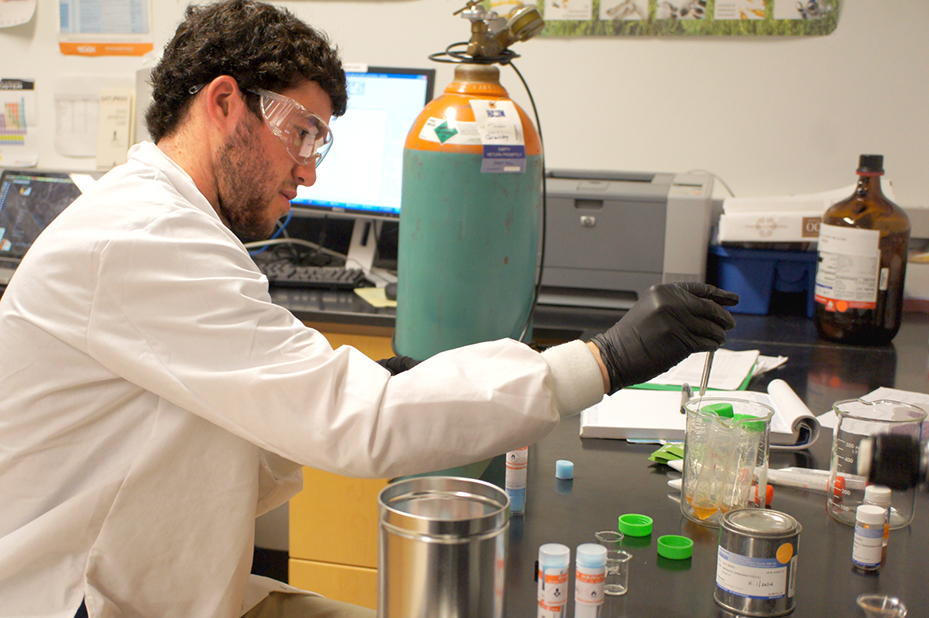
Although many people are frightened of the apian workers, honeybees are an integral link in the global food chain. Since 2006, there has been a noted increase in the prevalence of Colony Collapse Disorder (CCD) across the world. While many postulations exist, the definitive cause of this devastating phenomenon is not known. Jon Shapiro ’17, in coordination with Analytical Instrumentation Specialist Greg Rahn, is spending the summer conducting research as part of his project, “HPLC Analysis of Neonicotinoid Pesticides in Honey and Their Effects on the Kirkland Area.”
Shapiro’s summer research is a continuation of the work he has been doing throughout the past academic year with Rahn. Shapiro is attempting to develop a solid methodology for determining if there are pesticides present in the honey and wax of local bee populations. He is measuring the levels of toxic chemicals in these products with the hopes of determining the effects on the hives and their impacts in the Upstate region.
Citing the eye-opening documentary, The Vanishing of the Bees, Shapiro explained that approximately one-third of the food we consume is pollinated by these miniature horticulturists. A common misconception, as Shapiro pointed out, is that the chemicals in herbicides and pesticides are the cause of CCD; in truth, they have not been explicitly linked. Shapiro would like to determine whether these chemicals are the cause of CCD or are simply contributing factors. Although they may not be the direct cause, Shapiro explained that the chemicals may produce sublethal effects on the bee community, such as changes in foraging activities or susceptibility to diseases.
While Shapiro would prefer to find no trace of pesticides, he is more focused on obtaining accurate results; he is still learning the nuances of the high-tech laboratory equipment and the numerous forms of testing methodology. Using the QuEChERS method, Shapiro tests to see if the honey or wax extracts contain pesticide residue. Next, the sample is placed in a C18 cartridge with a solvent to separate the molecules of the compound by their polarity; then he uses Liquid Chromatography Mass Spectroscopy (LCMS) to fragment the compounds by firing protons at them. To add another layer of certainty to his results, Shapiro also analyzes the compounds using DART Ionization.
Although Shapiro has not yet declared, he is a prospective chemistry major who is interested in pursuing a career in environmental chemistry. He would like to approach the issue from the research side, and believes that a strong background in science is essential to influence policy changes surrounding the topic.
Jon Shapiro is a graduate of Brighton High School in Rochester, N.Y.
Posted June 26, 2014
